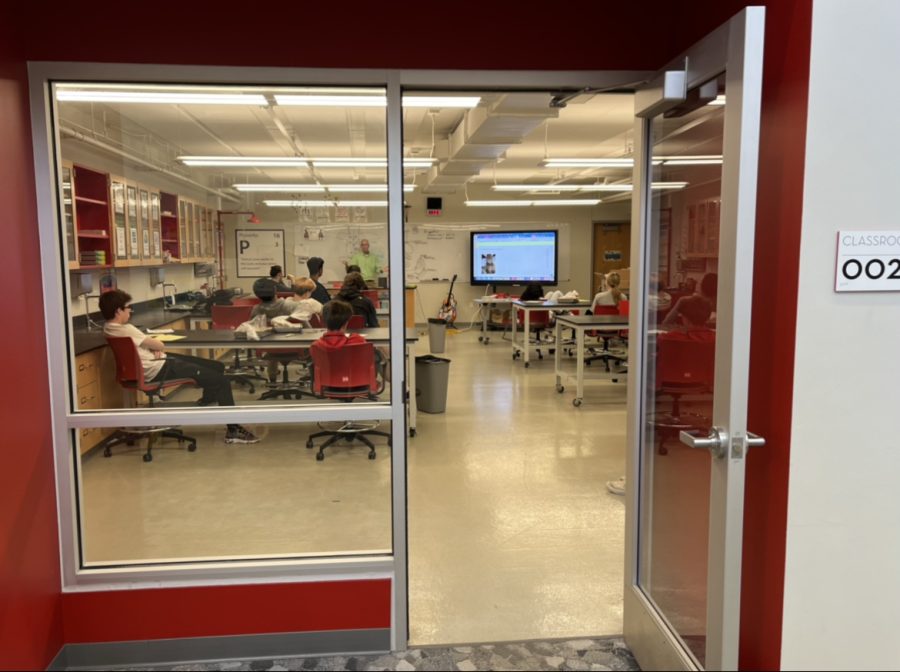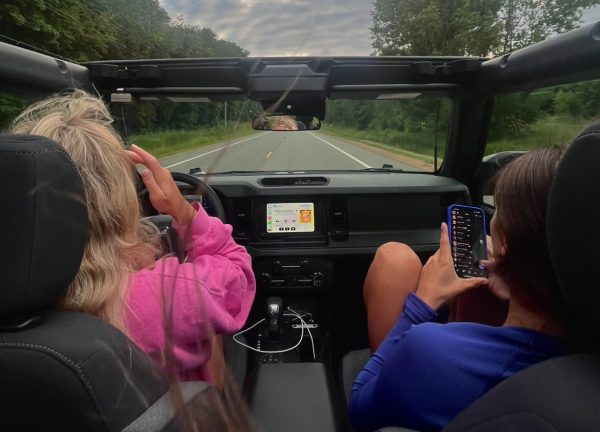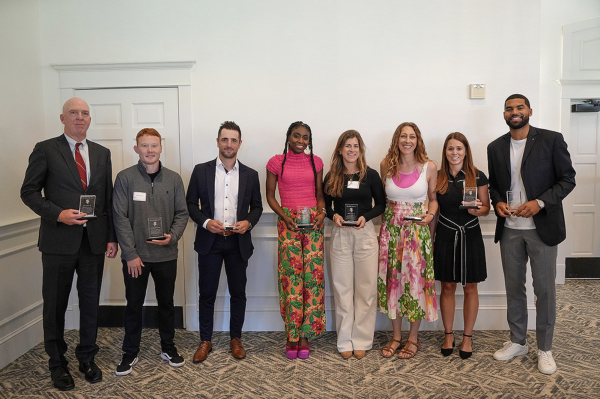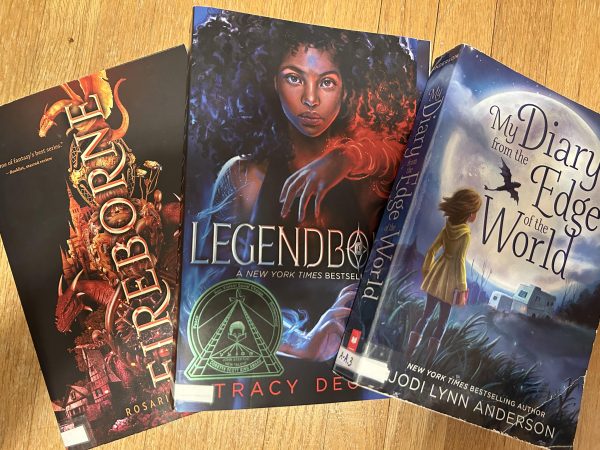A Dive Into BSM’s AP Research Projects
AP Research teacher Mark Peterson teaches many science classes, including sophomore biology.
In Mark Peterson’s AP Research class, students need to come up with a question and their own line of research for potentially the first time in high school.
The purpose of AP Research’s year-long project is to come up with and ideally answer a question to fill a gap in established research. “Students ideally come with their own question for AP research, and the question should be trying to fill a gap in some kind of known research, in the known knowledge base. [This is] with the idea that with their question they’re going to try to create something, or explain, or explore,” Peterson said.
This year, students came up with a wide range of unique questions to research. “For example, this year Emerson Foley was creating an app relating to food sensitivities. Clara Klaussen was exploring the relationship between salt runoff from roads into freshwater ecosystems, and how that impacts macroinvertrebates like dragonfly nymphs. Ryan Long was looking at the potential link between bromoline, which is found in pineapple juice, and inflammation, like having your wisdom teeth pulled,” Peterson said.
Senior LoLo Landry studied the effects of UVV light on bacteria colonies in luria broth for her AP Research project. “So basically, I exposed staphylococcus epidermidis to a UVV at home phototherapy light in luria broth. […] What I did was I made a subculture of bacteria and I exposed it, in luria broth, to the UVV phototherapy light and then I let it sit in the incubator. And then after that I performed serial dilution, so basically I got it to a realy small concentration, and then I inoculated it on an auger plate and then I let that sit in the incubator. And then basically once the bacteria started growing I counted the number of colonies to see if between the control and the bacteria that was exposed to see if there was a difference in the number of colonies,” Landry said.
Students ideally come with their own question for AP research, and the question should be trying to fill a gap in some kind of known research, in the known knowledge base. [This is] with the idea that with their question they’re going to try to create something, or explain, or explore
— Mark Peterson
Students start on their projects early, considering what their question might be before the school year even starts. “Kind of the timeline is they have a summer assignment to come up with a list of possible research questions so when they come back in August we can take a look at the questions and some of them are infeasible for a high school student, or we don’t have access to that material. So in the fall the business is identifying your research question. That’s the first thing. Within that, students are encouraged […] to find an outside expert,” Peterson said.
Landry took the first semester to conduct research and nail down her question before actually conducting experimentation. “It kind of took me until January to have a set question, and honestly the whole first semester was kind of research, making sure I was knowledgeable in what I was doing before I actually performed an experiment with something. Second semester was when we all did our experiments,” Landry said.
When she finally finished her research, Landry tried to figure out if staph colonies can be reduced by the same UVV phototherapy used by those with Eczema. “I figured out that phototherapy can be a good option for people with severe Eczema. So I was interested in the UVV aspect of that. So I was like, ‘What could I do with this?’ […] I figured out that people with Eczema are more prone to bacterial infections because they have a weakened gene variation. Basically, that if you have Eczema it’s hard for your skin to protect itself. It’s hard to have a barrier. People with Eczema are more prone to staph in general, so I was trying to figure out a way to see if the phototherapy that helps Eczema can lessen staph colonies,” Landry said.
Pre-COVID students would go into labs to talk to a professor, and now it’s more likely to happen on a Zoom call [or] something like that
— Mark Peterson
The AP Research projects continue to be somewhat affected by COVID-19, as less time was spent in labs outside of school during the worst of the pandemic and it’s no longer as common to have face-to-face interviews. “Pre-COVID students would go into labs to talk to a professor, and now it’s more likely to happen on a Zoom call [or] something like that,” said Peterson.
Landry found the project personally interesting, especially because students were given such autonomy with regards to their line of research. “It’s actually kind of interesting because this is kind of the first research project we’re left to ourselves to do. You can ask Mr. Peterson for help, but otherwise you don’t have instruction or guidance other than Mr. Peterson,” Landry said.
Peterson’s favorite part of the course is listening in on student’s discussions and watching them become experts in a course of study of their own choosing. “Oh man, I guess my favorite part is listening to them talk to each other about their work. […] If you pick up a video game, or whatever, you’re curious about it, you want to figure out how to get better at it, how to beat the game, and so you do all kinds of outside research. No one’s telling you what to do, it just is an innate curiosity that you’re trying to get better. And that’s the best part of the whole course,” Peterson said.

















































